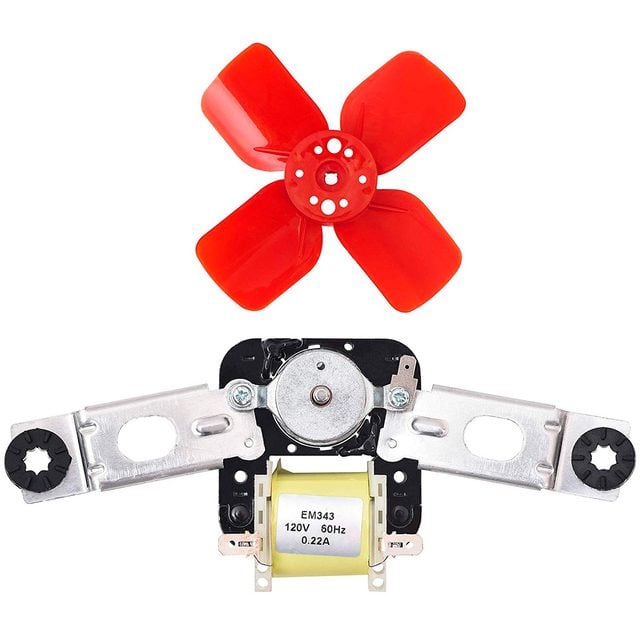Refrigerator Not Cooling: How to Fix Refrigerator Problems
Refrigerator not cooling? Here's how to fix a refrigeration and some refrigerator troubleshooting
Our editors and experts handpick every product we feature. We may earn a commission from your purchases.
Introduction
Here's how to troubleshoot a failing fridge that's lost its frosty feel. This step-by-step guide will show you how to identify the problem and possibly even fix it yourself. Even if the repair requires a pro, you will be able to show them the problem thus saving them time and you money.Tools Required
- Socket/ratchet set
- Wire stripper/cutter
Materials Required
- Evaporator fan and/or condenser fan
Why Is My Refrigerator Not Cooling?
There are several possible causes when a refrigerator doesn’t keep your milk cold or your ice cream frozen. Before you attempt more complex repairs, try these simple fixes if your refrigerator is not cooling and if your freezer is not working:
- Be sure the fridge is plugged in and getting power. The light should come on when you open the door.
- Check the thermostat to make sure it hasn’t been turned way down by mistake. If your fridge/freezer thermostat isn’t working, you can get these easy to install thermostats on Amazon.
- Be sure the vents on the back of the freezer compartment aren’t blocked by boxes of ice cream or frozen vegetables— the vents have to be clear for cold air to circulate.
- Vacuum the coils under or behind the fridge. Clogged coils can cause poor cooling.
- Check to make sure nothing is stuck in the condenser fan and that it spins freely (models with coils on the back won’t have a fan). To do this, unplug the fridge and pull it out. Clean the fan blades and spin the fan by hand to see if it’s stuck. Plug in the fridge and make sure the fan runs when the compressor is running. If the fan doesn’t run, see the directions below, which show how to replace it.
In this video, we’ll show you some additional tips for troubleshooting refrigerator problems:
Replace the Refrigerator Evaporator Fan
Here are some refrigerator troubleshooting tips to help you zero in on the problem if you notice your fridge not cooling. If you can hear the compressor running but the fridge isn’t cooling, the problem is most likely either frost-clogged evaporator coils or a stuck or broken evaporator fan. Evaporator fans often squeal or chirp when they start to go bad. You’ll know it’s the evaporator fan if the noise gets louder when you open the freezer door. The evaporator coils and fan are located behind a cover in the freezer compartment.
Buy an evaporator fan kit on Amazon.
If you remove the cover inside the freezer and find the coils completely filled with frost, take everything out of the freezer and fridge, unplug it and let it thaw for 24 to 48 hours. Keep a few towels handy to soak up water that may leak onto the floor. When all the frost is melted away, plug the fridge back in. If it works, the problem may be a defrost timer, defrost heater or defrost thermostat. Replacing these parts isn’t difficult, but figuring out which is faulty requires troubleshooting that we won’t cover here. Call a pro if you suspect a problem with these parts.
Normally the refrigerator condenser fan and compressor, located near the floor on the back of most refrigerators, come on when the thermostat calls for more cooling. If you don’t hear the compressor running after the door has been left open for a while, it could mean the condenser fan is stuck or worn out or that the relay or compressor is bad. Learn how to replace the evaporator fan below.
Project step-by-step (6)
Remove Cover
Remove the cover to inspect the refrigerator evaporator and to access the evaporator fan. The screws may be covered with plastic plugs that you pry out.
Remove Fan Cover
If your refrigerator has a fan cover, remove the screws that hold it in place. Then remove the cover to reach the fan.
Remove Evaporator Fan
Replace the evaporator fan if it’s noisy or doesn’t spin. First, unplug the refrigerator. Then remove the screws that hold the fan to the wall of the freezer.
Replace the Fan
Replace the old fan with a new one. Remove the mounting bracket from the old fan and attach it to the new fan. Unplug the wires and switch them from the old fan to the new fan. Reinstall the fan and replace the cover.
Replace the Refrigerator Condenser Fan
Pull the fridge away from the wall, unplug it and remove the thin panel on the back near the bottom to access the compressor and condenser fan. Next plug the fridge in and wait for the compressor to come on. The fan should also come on. If the compressor runs but the fan doesn’t, or if the fan is noisy, you need a new fan. If neither runs and the compressor is hot, unplug the fridge and point a fan or a hair dryer set to “no heat” at the compressor. Wait for the compressor to cool and try again. If the compressor runs but the fan doesn’t, the fan is bad. Unplug the refrigerator and replace the fan (project directions below). If neither runs, then you may need a new relay or compressor. Call an appliance repair technician to find out.
When to Replace Condenser Fan
Replace the condenser fan if it’s noisy or doesn’t run. Depending on your fridge repair, you may have to remove the fan bracket first, and then unscrew the fan from the bracket.
Install the New Fan
Cut the wires close to the old fan. Use a wire stripper to strip the wires and connect the new fan with wire connectors. Screw the new fan to the bracket and reinstall the fan and bracket in the fridge.






